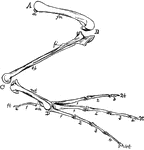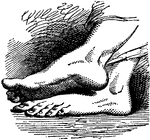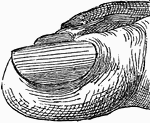Clipart tagged: ‘toes’

Bones of a Bird's Hind Limb
"Fig 34 - Bones of a bird's hind limb: from a duck, Clangula islandica. A, hip: B, knee: C, heel or…
Lower Extremity
The lower extremity of the human body. 1: Head of femur; 2: Femur; 3: Patella; 4: Tibia; 5: Fibula;…

The Flexibility of the Toes
The phalanges of the toes, though more feebly developed, have really the same movements among themselves…


